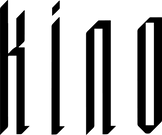








kino at SWAB 2021
Anne Beentjes, Mariana Gómez-Maqueo, Gisela Guzmán, Raúl Medina, Maureen Muse, Jorge Rosano Gamboa
Over the last few years, the concept of contamination has own a negative meaning, referring to the introduction of foreign substances into an element, making it unsafe. Thinking of something pure and arranged, however, is problematic in a current individualistic mentality and it is understood only within its own limits, making it invisible or denying the existence of an other that may be influential in its own experience.
Pollution is a symptom of deeper domination processes. Through the exploration between two or more ways of existing in the world, it generates relationships and strategies for survival, and it can be a strange invasion that serves to denounce the disparities of a system that only benefits a few. The chemicals collected in the toxic landfill by Anne Beentjes (Amsterdam, 1985) and used on the images of El Huizache show the polluting intervention of capitalism's necropolitical decisions on people's lives. Also, contamination in the face of the "pure" has the power of a communicative act: it takes us out of the centrality of the human and reveals the stories they told us in relation to nature and its opposition to culture. From the cyanotype process to which Jorge Rosano Gamboa (Mexico City, 1984) subjected a series of roses, creating a trans species between nature and human, contamination opens the possibility of liminality that opposes the great dichotomies. Pollution is a process of elimination; Gisela Guzman (Mexico City) shows us how chemists erase faces, as happens with all women, so often subjected to the violent processes of an oppressive system. The photographs by Mariana Gómez-Maqueo (Mexico City, 1993) show urban micro-invasions that sometimes go unnoticed by the urbanite's eye, snapshots in which nature and the street are mixed. Maureen Muse (Boston, 1993) creates the narrative of her images in the dark room, where she changes the temperature of some chemicals, to create different textures and contexts. And in Raúl Medina's (Mexico City, 1988) aerial videos the flow of moving urban elements - cars, people - energizes and weaves together the architectural fabric creating a perfect and wonderful chaos, like a spontaneous choreography.
Pollution is a tool that we can appropriate: as a method of protest, an element for the new creation or a technique for reconfiguring the past. Pollution can be beautiful too, because it has to do with collaboration, hybridization and becoming-with. The reconfiguration of these practices teaches us how we can relate from otherness and create new possible worlds: pristine, political and contaminated.
Carolina Estrada
.png)


